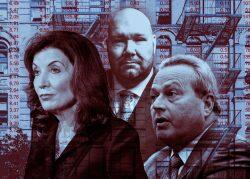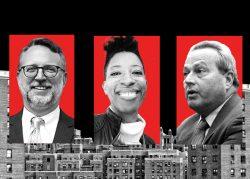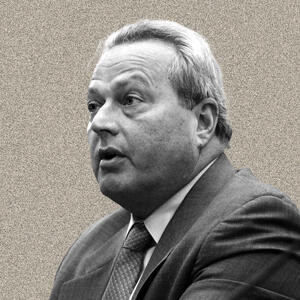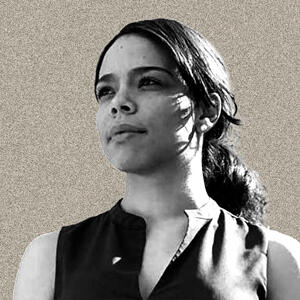A report by the city’s Rent Guidelines Board released Thursday showed rent-stabilized buildings’ net operating income fell 7.8 percent in 2020, the largest dip in 17 years.
Profits plunged as rental income declined 3.8 percent year-over-year after the Rent Guidelines Board froze rents for one-year leases in the period.
Owner groups warn that the withering returns show the city’s stabilized housing stock could be on the brink of “collapse” as landlords struggle for revenue to cover maintenance costs.
More than just a “Covid anomaly,” the Rent Stabilization Association said, the decline in income is the byproduct of housing policy — notably the 2019 rent law that curtailed owners’ ability to raise rents to pay for improvements to apartments or buildings, leading some to forgo repairs.
However, a separate analysis by the rent board of income that went toward operating and maintenance costs — a measure of the overall health of the stabilized housing — found owners spent about the same on upkeep in 2020 as in 2019: about 60 cents of every dollar made.
Still, landlords say the 2020 snapshot doesn’t offer a full picture of the heightened expenses they claim to have weathered throughout the pandemic.
Read more


Although property tax assessments fell more than 11 percent from fiscal year 2020 to 2021, according to Department of Finance data, many owners say their tax bills jumped in the same period. A broker on Twitter claimed the property taxes on a rent-stabilized building in Brooklyn have ballooned 21 percent over the past three years.
Looking at a 12 unit rent stabilized building in Brooklyn right now.
In the last 3 years…
Rent Roll is up a total of 1.5%
RE Taxes are up 21%.
This is not sustainable.
— Kevin Clark (@Cribdilla) February 1, 2022
Heating bills are also up. Ann Korchak, a rental building owner and spokesperson for the group Small Property Owners of New York, said she paid 60 percent more to Con Edison in December than in the same month two years prior. Water and sewer rates were also raised despite landlords’ begging the city not to hike them last year as stay-at-home orders caused consumption to soar.
A spokesperson for owner group Community Housing Improvement Program added that the Rent Guidelines Board’s report doesn’t factor in the costs of capital improvements and mortgage payments. CHIP estimates about a quarter of all rent collected goes to mortgage payments and that capital expenses, such as elevator repairs and facade upgrades, cost as much as $200 per unit per month.
“When factoring these numbers into the RGB’s income and expense data, the average building is in distress or very close to distress,” CHIP spokesperson Michael Johnson said.
The report found that 6.5 percent of buildings in 2020 were “distressed,” 1 percentage point higher than the year prior, as their operating and maintenance costs exceeded their gross income.
To offset those costs, owners of rent-stabilized buildings are looking to the Rent Guidelines Board to vote this June for a substantial rent increase. Tenants advocates have been calling for full- or partial-year freezes to protect renters who have struggled throughout the pandemic.
At last year’s board vote, owner representatives proposed a 2.75 percent hike on one-year leases. The board ultimately approved a half-year freeze followed by a 1.5 percent increase for the 2021-2022 leasing term.
Landlords said the board ignored the 2 percent hike recommended by its own staff based on data. They hope for a different result this summer.

RSA President Joseph Strasburg
“The RGB must tune out the background noise and interference from the anti-owner politicians and, instead, base deliberations on their own data when establishing guidelines in June for one- and two-year rent-stabilized apartment leases,” said RSA President Joseph Strasburg.
“Tenants, owners, and the survival of New York’s affordable housing is depending on it,” he added.
Yesterday, Mayor Eric Adams signed a bill that extends the deadline for the city to complete the housing vacancy survey, a periodic study used to determine whether New York is still experiencing a housing shortage that triggers rent stabilization.
Intro 70 pushes the survey deadline from April 1 to July 1. Adams said the city needed more time to complete the survey coming out of Covid.
Owner groups have called the delay a ploy to ensure the vacancy rate falls below the 5 percent threshold that constitutes a housing emergency. Tenant groups say Covid was an anomaly that led tenants to leave the city and would skew the vacancy survey.

Council member Pierina Sanchez
Comments from Council member Pierina Sanchez at a Monday press conference highlight that the city delayed the survey with the goal of continuing rent stabilization.
“Extending the deadline for completing the housing and vacancy survey in order to ensure the integrity of the survey is paramount to rent stabilization and the protection of New Yorkers,” Sanchez said.
